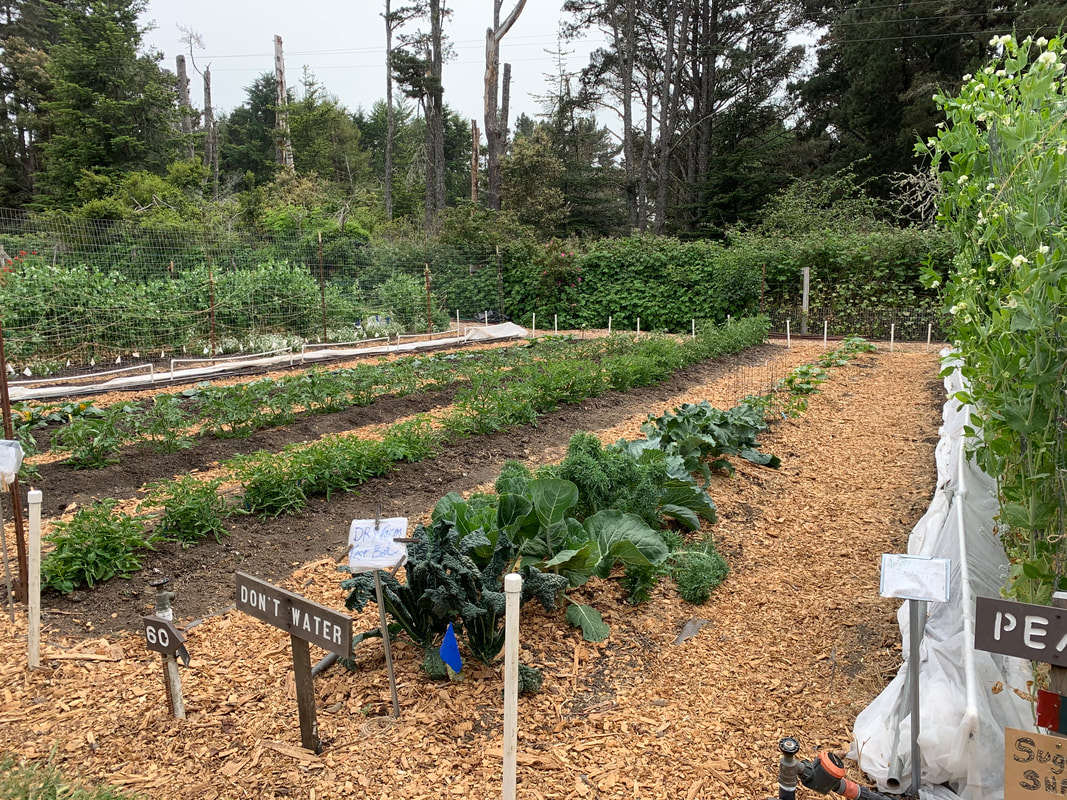Learn what other things we do to be a successful garden and the best practices for how to make our crops thrive. These videos and articles are an ongoing series throughout the season to show the garden's progress. Please check in often for new videos about what we are doing.
Contributing to the Compost in the Garden
|
|
Why use wood chips in the garden.There are 5 reasons why we use wood chips.
1) They improve the nutrient levels in the soil. 2) Unparalleled weed suppression by preventing germination of weed seeds by keeping them in the dark. 3) Maintain moisture levels in the soil. 4) Moderates soil temperature year round. 5) Hold soil in place. This wonderful resource is free to the Sea Ranch community and we take full advantage of it at the garden. The tree crews separate tanbark oak and other trees that are known to carry 'sudden oak death' from the chips stream and is careful to not contaminate the chips with this. |
|
|
How wood chips transform the soil.
This Gardener has some great footage on how it benefited his soil and what we are seeing in our garden is extending our usage and production that we are getting.
Wood chips are not all wood. They contain all the leaves & needles as well, most of what we receive is from living trees, not dry dead trees. They are also not going to add acidity to the soil by much if any- very little redwood is chipped by TSRA, it is more acidic than the usual mix they provide. Our soil is also slightly alkaline, so mild acidity in additive is helpful. The larger size of the chips we get helps extend the time is benefits the soil, and also reduces the amount of nitrogen it absorbs while composting. 'Surface area' dictates the nitrogen absorption, and the speed of decay. Large particles have far less surface area than small particles, so all processes are slower and therefore work better for our purposes. |
|
|
|
| |||||||
| posh_compost_info_with_forest_compost_update.pdf | |
| File Size: | 139 kb |
| File Type: | |
|
|
Picking flowers.Presented by Marjie.
UPPER FLOWER AREA: Flowers at upper end of the garden - When the Alstroemeria (Peruvian Lilies) are blooming: please pick by gently pulling the whole flower stalk from the ground, DO NOT CUT. As other flowers are ready for cutting, please cut just above the new buds. If no new buds are showing, please cut stem all the way to the base of the plant. The only exception is roses - please cut these just above a leaf set that has 5 leaves (not 3). In all cases of cutting flowers, do not leave bare stems. Proper cutting means more flowers! |
|
|
|
|
|
|
|
|
|
|
|
|
|
|
|
|
Copyright © 2023
|

